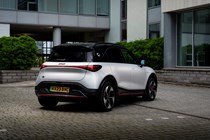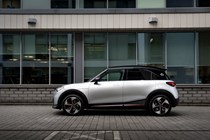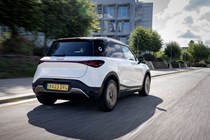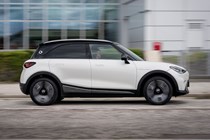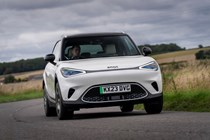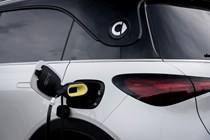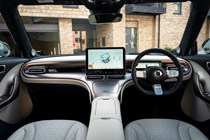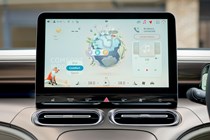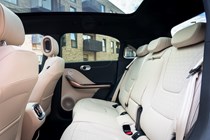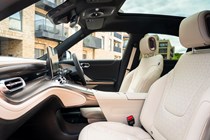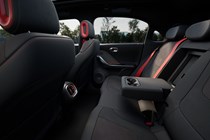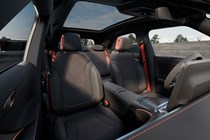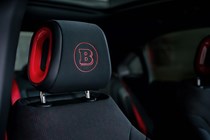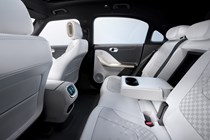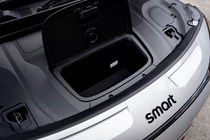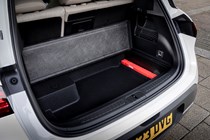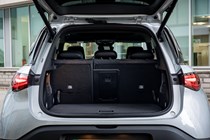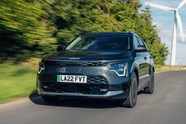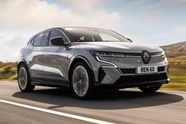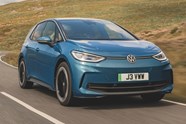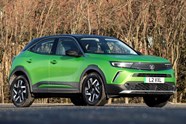
Smart 1 review
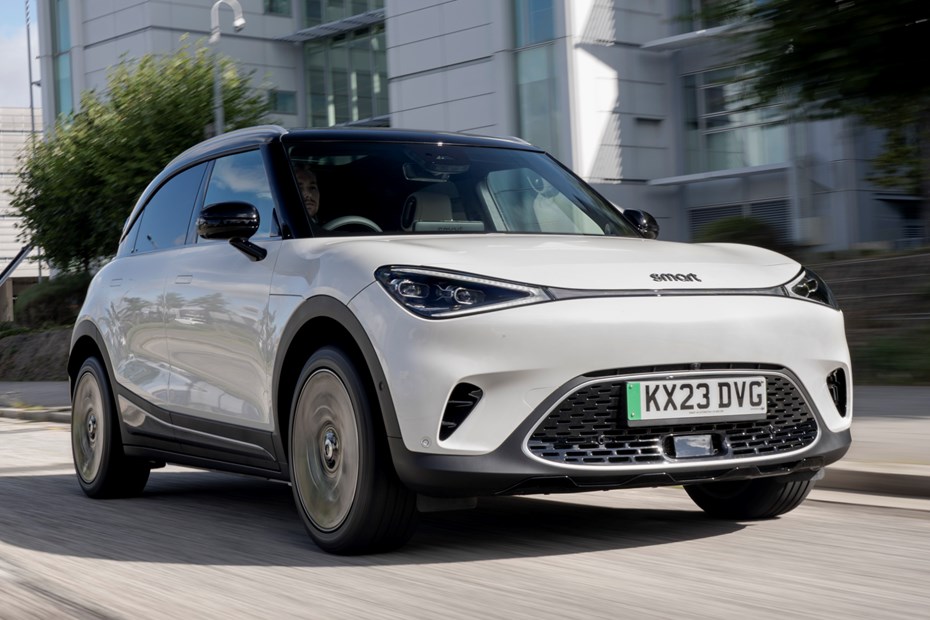
At a glance
| Price new | £29,960 - £44,960 |
|---|---|
| Used prices | £15,978 - £27,139 |
| Road tax cost | £195 - £620 |
| Insurance group | 29 - 38 |
Get an insurance quote with

|
|
| Fuel economy | 2.1 - 3.7 miles/kWh |
| Range | 193 - 273 miles |
| Miles per pound | 3.3 - 10.9 |
| Number of doors | 5 |
| View full specs for a specific version | |
Available fuel types
Fully electric
Pros & cons
- Spacious and flexible interior
- Strong performance and good range
- Lots of standard kit
- Small boot
- Annoying driver attention software
- Brabus doesn’t handle as well as it goes
Overview
Wanna feel old? Smart celebrated its 25th anniversary in 2023. But the brand that brought you that easy-parking, compact ball of fun has come a long way in that time. Now, it’s jostling for position with some of the best electric cars on sale with this – the Smart #1. Pronounced hashtag one. Really.
It’s a significant step forward for a company whose range was, until very recently, limited to a pair of fairly dreadful electric city cars. The #1 is targeting the best cars in the small electric SUV segment – and it hopes to attract buyers with its Gen-Z-tastic name, funky looks, and competitive stats.
Other small-ish electric SUV rivals include the newly refreshed Kia Niro EV which sacrifices a dash of style for better practicality and a 285-mile range. The Mercedes EQA is as fashion-led as the Smart but it’s a little more traditional and a lot more desirable. Or, if you value a sharp driving experience above all else, you could opt for the Parkers award-winning Renault Megane E-Tech Electric.
The Smart #1 is available with a choice of two powertrains. The standard car has a single 272hp electric motor mounted on the rear axle – and it should be more than brisk enough for most drivers. However, if your last name is Hamilton, you can have a 428hp Brabus-tuned model with an extra electric motor powering the front wheels. That model can sprint from 0–62mph as quickly as a BMW M3.
Every version of the #1 features the same 66kWh battery pack which, when paired with the 272hp electric motor, offers a maximum range of up to 273 miles. The Brabus model can only manage 248 miles because of its extra electric motor, but both versions of the car can charge from 10–80 percent capacity in 30 minutes as they both support 150kW DC rapid charging.
You have three trims to choose from. The entry-level model is called Pro+ – but there’s nothing entry-level about its equipment list. You get 19-inch alloy wheels, two-zone climate control, heated and electrically adjustable front seats with driver’s memory, a powered tailgate, sliding and reclining rear seats, a panoramic sunroof, a 12.8-inch infotainment system with sat-nav and all the parking and driving assists you could ever need.
Mid-range Premium models build on this specification with a different set of 19-inch alloys, adaptive headlights, a 10-inch head up display, a gesture-controlled tailgate, real instead of fake leather seats, fancier ambient lighting, a booming Beats audio system and wireless smartphone charging.
The range-topping Brabus variant features the same amount of technology as the Premium model, but it gets a sportier body kit, a unique set of alloy wheels and a few well-placed Brabus badges. The cabin gains a few extras, too. The standard leather steering wheel is swapped for an Alcantara-clad replacement and there’s some grippier suede upholstery for the seats.
Over the next few pages we’ll assess each aspect of the Smart #1. Our scores will consider its practicality, comfort, interior technology, driving experience and running costs. We’ll then summarise our findings in our verdict page and let you know whether it’s a worthy addition to the small electric SUV segment – or whether you should buy one of its rivals.




